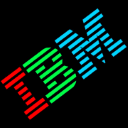guardian452 wrote:
praetor242 wrote:
Cuz Windows 10 sux.
Really? Because after using the mac since around 10.4 I got a windows machine last year and really like it.
Different strokes, I guess...
Well just because one doesn't like mac OS doesn't mean that makes Windows
10
any better. I use Windows for all of my main production software and equipment and have no desire to touch OS X / mac OS-- but that doesn't mean I'm jaded.
I'll tell you why Windows 10 is a HUGE problem and only getting worse:
#1 pushed advertisements and applications that cannot (truly) be disabled, and can only be deferred with insane acrobatics and editing of the OS
#2 constant 'chatter' to the internet and hijacking of your bandwidth with NO WAY to turn it off unless you block it from your firewall
#3 With the advent of the creator's update even more restrictions with the 'advertisement IDs' affixed to each PC and
no way
to turn off telemetry or CEIP as they're integrated into critical processes
#4 Locked-down interface options so you're stuck with a mismatched contrasted colour scheme (while I can make it workable, it's still stupid). Obviously the the new Microsoft generation forgotten what Brad Wardell told MS to do in XP with at least making the clown interface
customizable
.
#5 Bipolar interfaces that flip between "Metro" and Windows classic
#6 Forced automatic updates which often reset a lot of things and push out candy crush repeatedly
#7 No disclosure of ALL of the information Microsoft inhales through their "vortex" server and many others
#8 False interfaces that don't actually turn off what they claim (turning off CEIP under Windows 8, let alone Windows 10 DOES NOT turn it off!)
Windows 7 isn't totally excluded from the interface stupidity, apparently Windows 7 Aero is programmed as the only interface option to include V-Sync. If you disable the transparency or use classic you don't get V-Sync. Sure, not a huge problem--that is until you get tearing on a more complex display like a T221. And if you try to FORCE V-sync from your GPU's driver, Windows 7 ignores it.
Don't get me started on the fact Windows 7 (and Windows 10!) still don't have proper interface support for scaling interfaces.
This is something that freaking OS/2 Warp had back in 1999
! I'm not sure if Windows will ever have proper interface scaling due to the antiquated APIs that are needed to maintain compatibility. DESPITE THE FACT they created the Metro interface which COULD HAVE addressed that.
---
My problem
with Windows 10 sentiment
is that everyone who is in favour of it, deliberately ignores or WANTS to be oblivious to all of these problems (and more). Quoting Ed Bott articles (which are poorly written and the fact Ed Bott barely understands computing in general) or saying "this is where operating systems are going" is not a valid excuse.
Power users don't have time for that CRAP.
I'll tell you how Windows 10 could be fixed while retaining all of the "cloud" stuff:
Optional updates, optional CEIP, optional telemetry, optional "windows store / candy crush", optional advertisements (maybe with an extra premium "fee"), ALWAYS retain custom configured settings after updates, fully customizable interface like Windows 7 (but with V-Sync support on EVERYTHING), etc.
The problem is... Microsoft WANTS to force advertisements and gain customer data for purposes of profit. There is NO defense for that.
P.S. Oh yeah... and they could go back and borrow IBM's 1999 OS/2 codebase to fix their interface for high DPI scaling. But they won't.

















 ) I never saw the advantage over "real debian" unless you wanted commercial support. I stopped using ubuntu around 07/08 or so and did a hackintosh on my thinkpad x40 (when leopard first came out) which led to a real mac purchase couple months later.
) I never saw the advantage over "real debian" unless you wanted commercial support. I stopped using ubuntu around 07/08 or so and did a hackintosh on my thinkpad x40 (when leopard first came out) which led to a real mac purchase couple months later.








 R16000 700MHz 8GB RAM
R16000 700MHz 8GB RAM


 .
.
 In all fairness I had some 13w3 monitors until 2014 when I got rid of the last of my SGI machines.
In all fairness I had some 13w3 monitors until 2014 when I got rid of the last of my SGI machines.